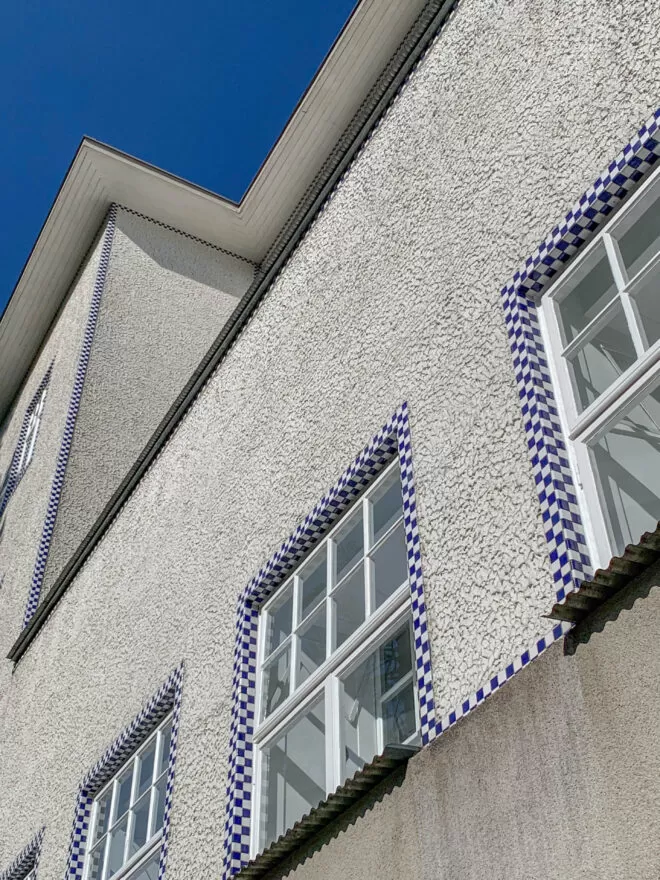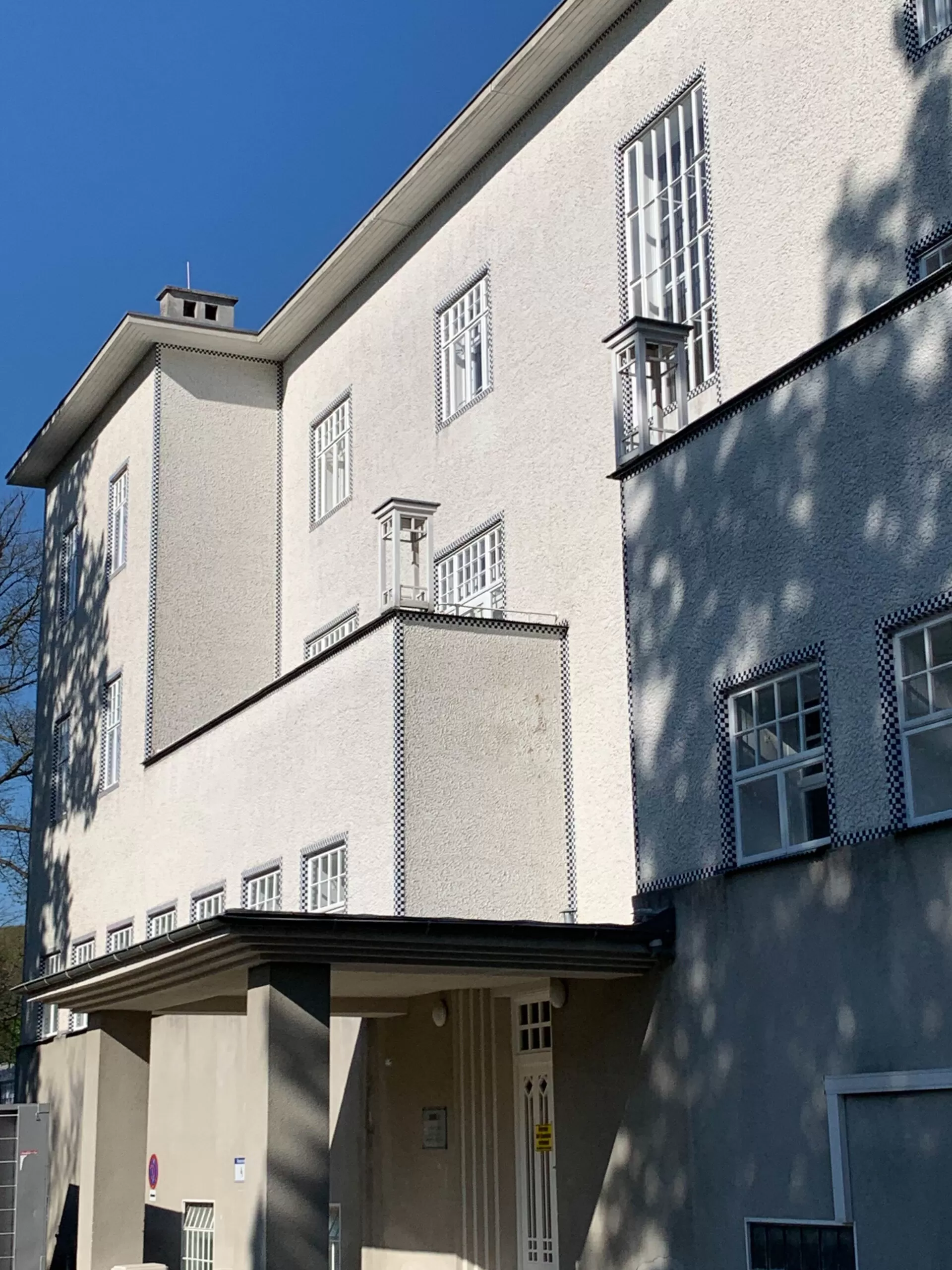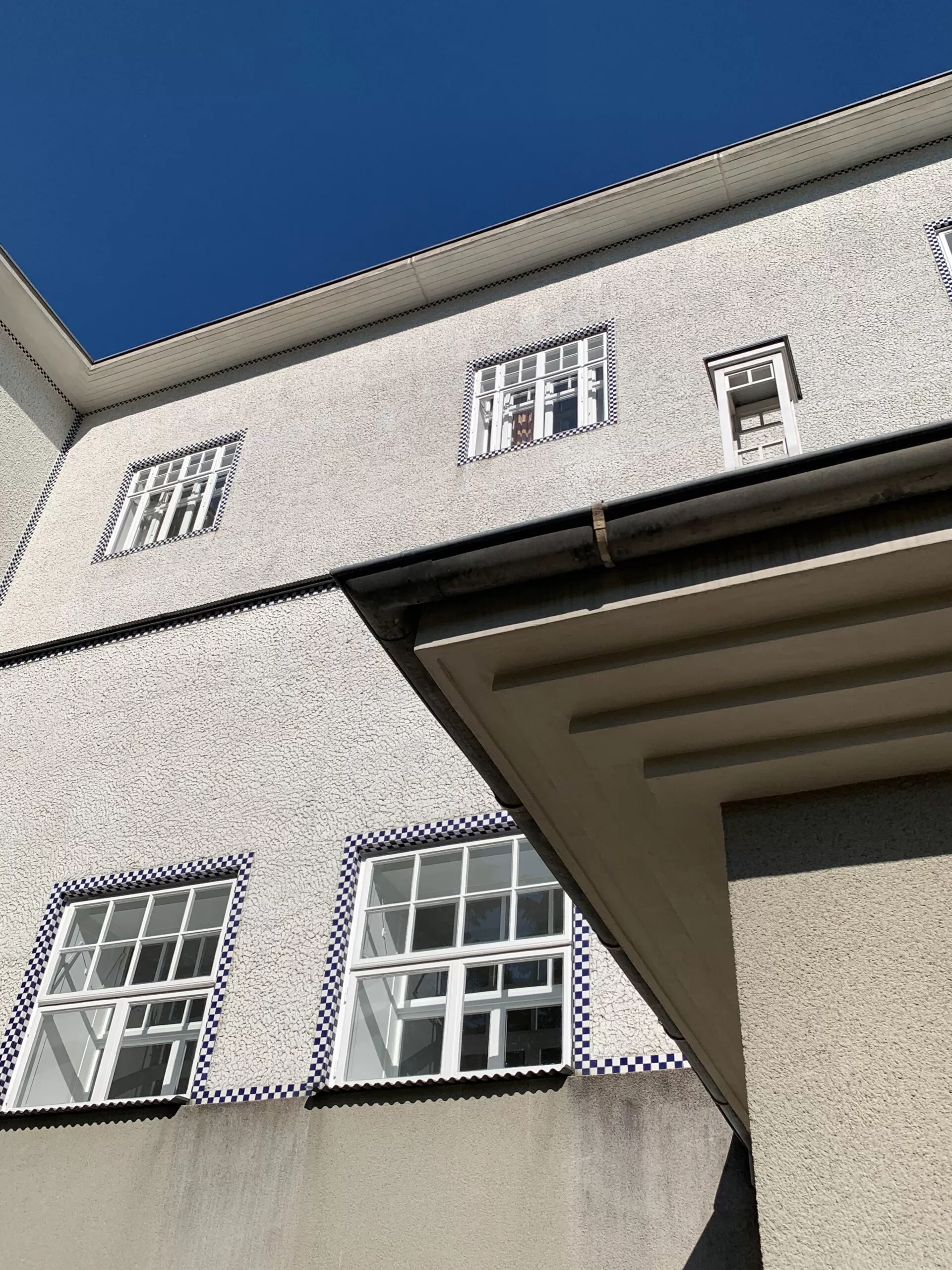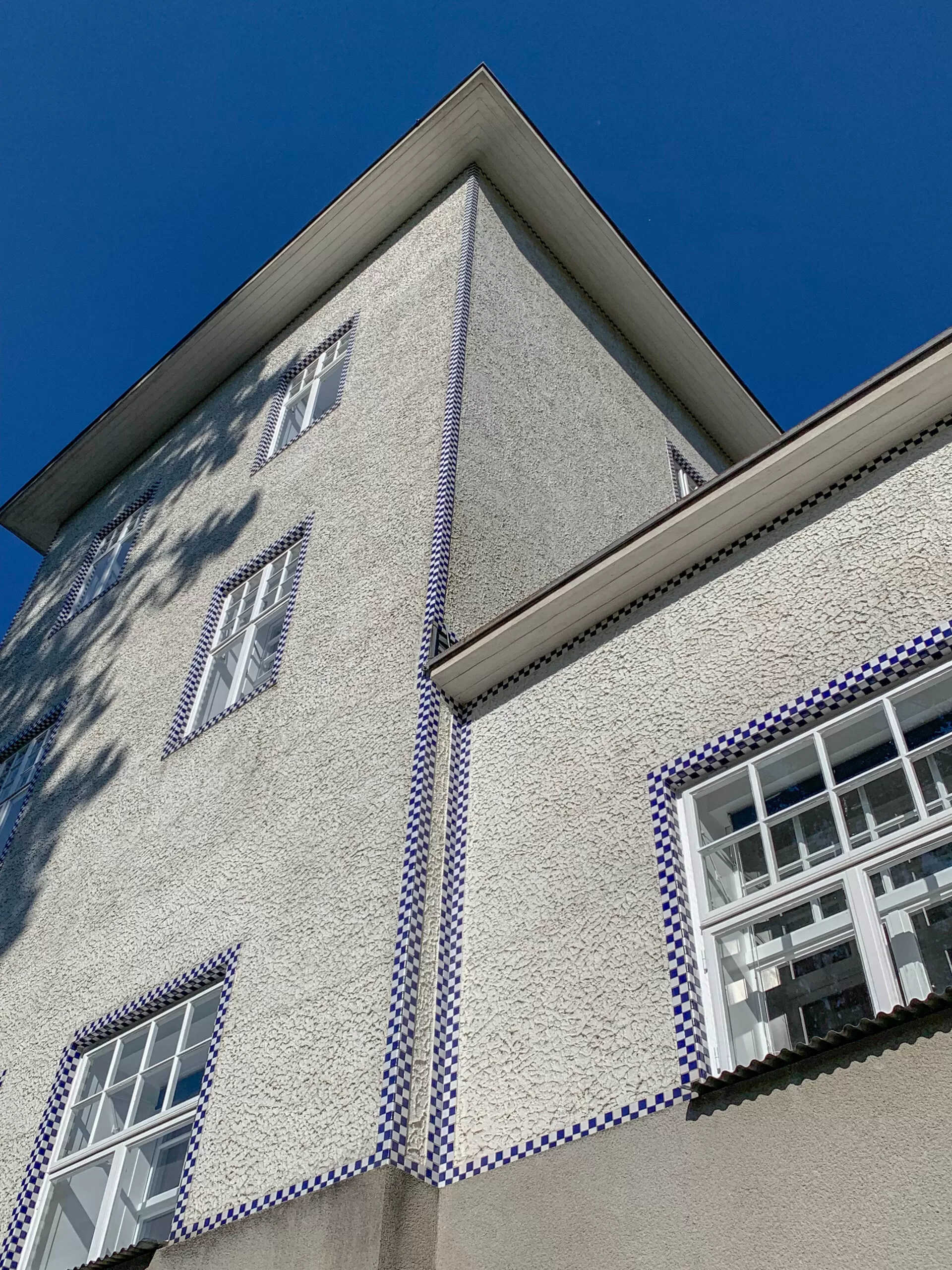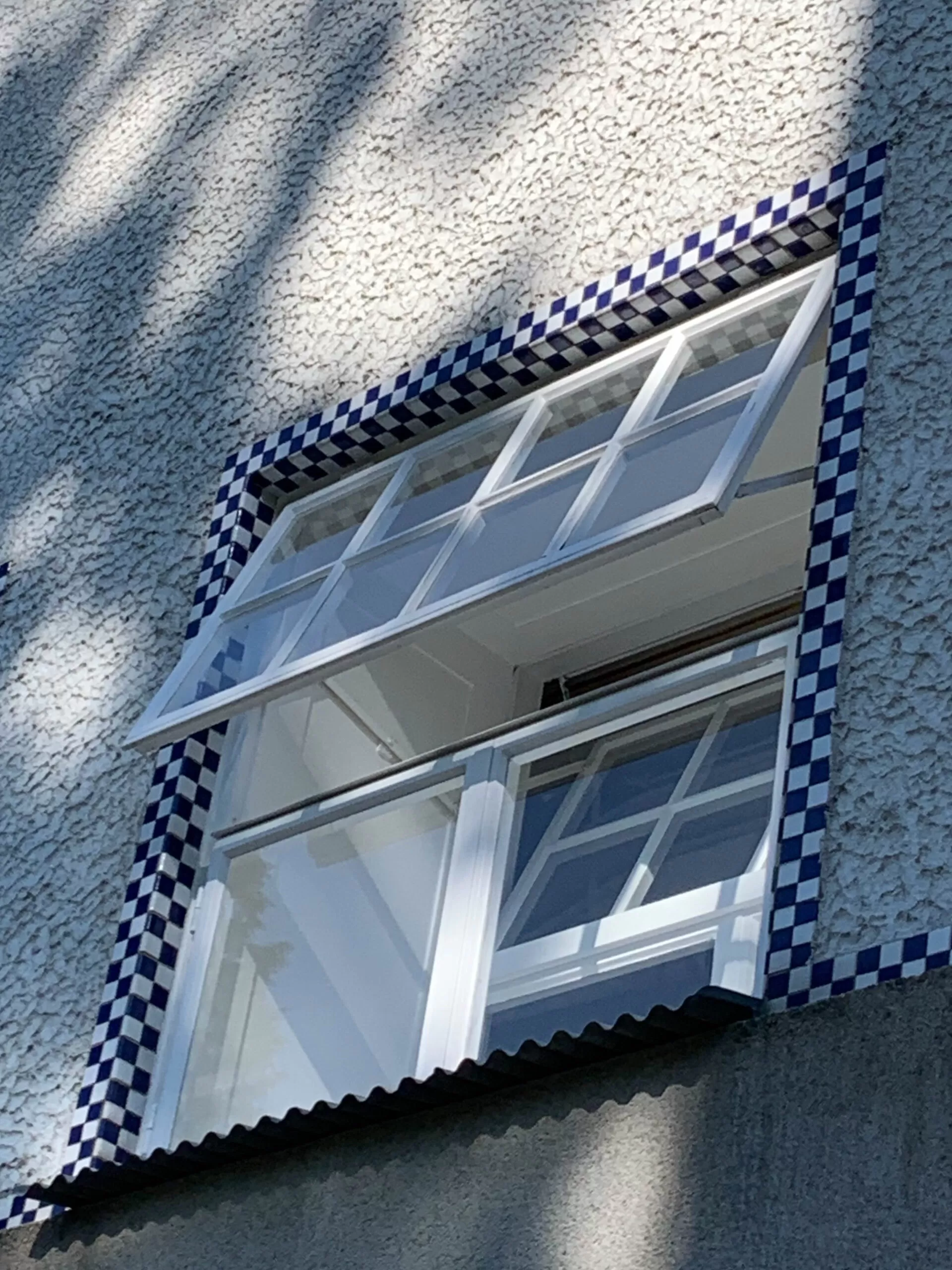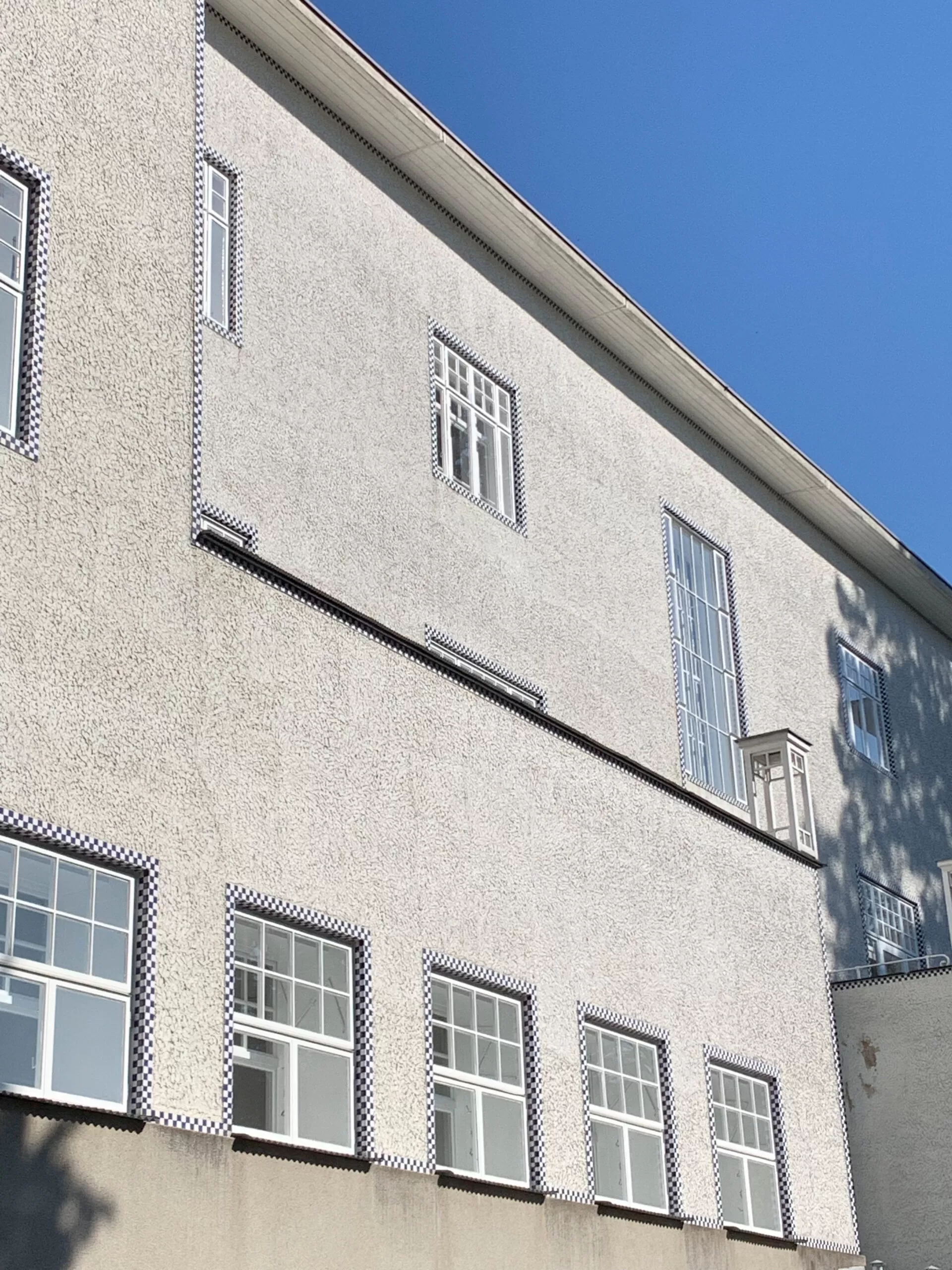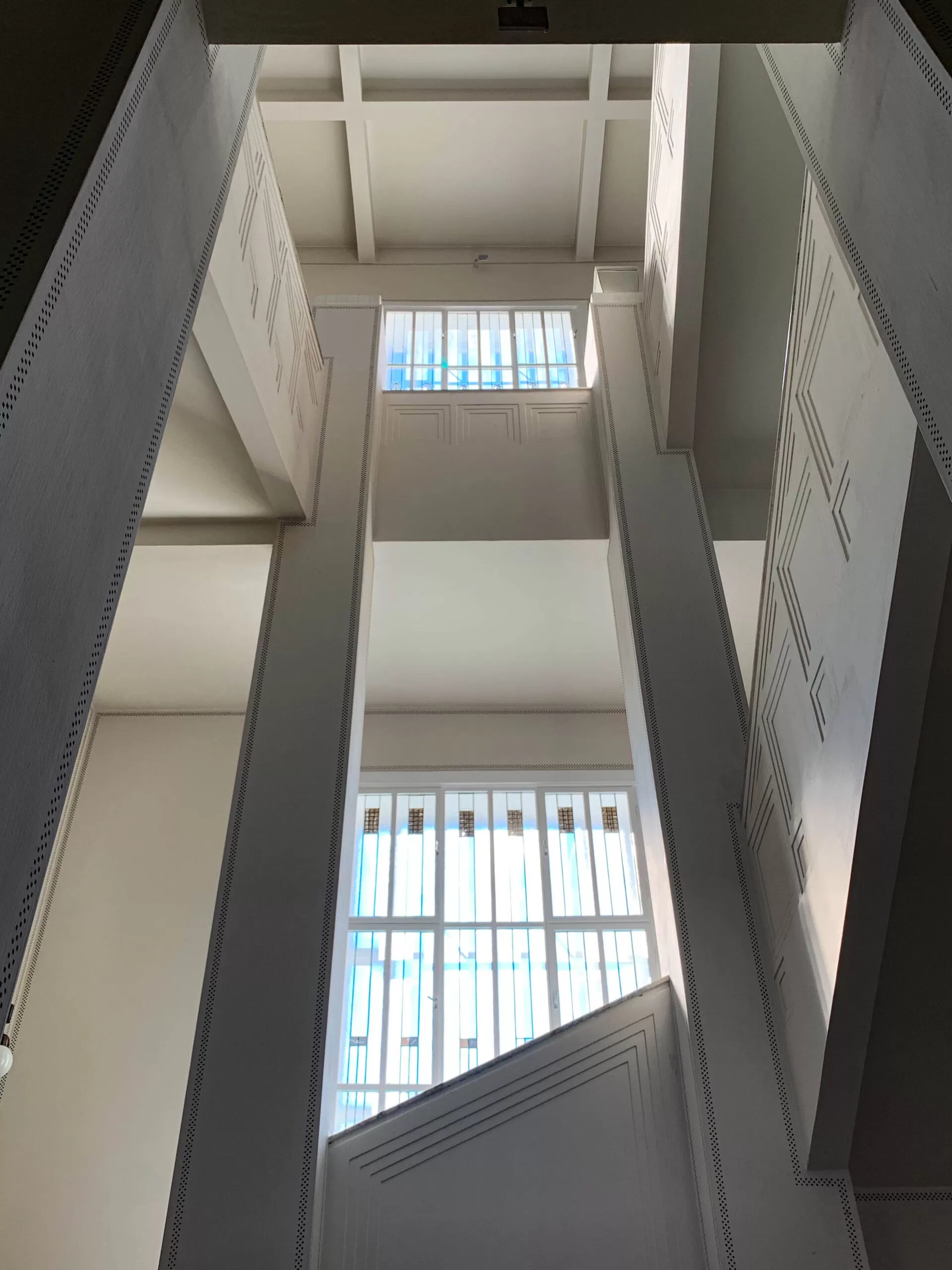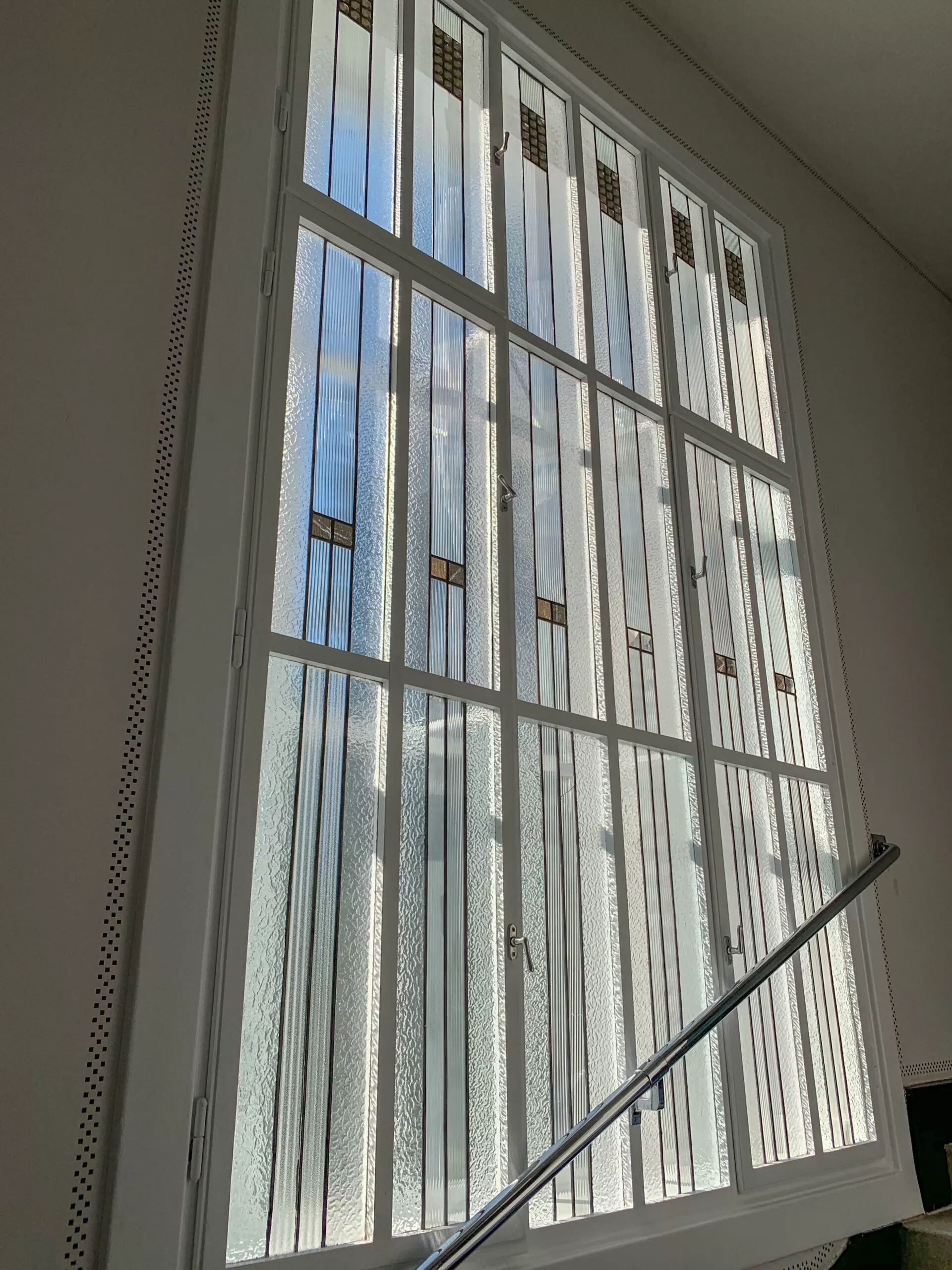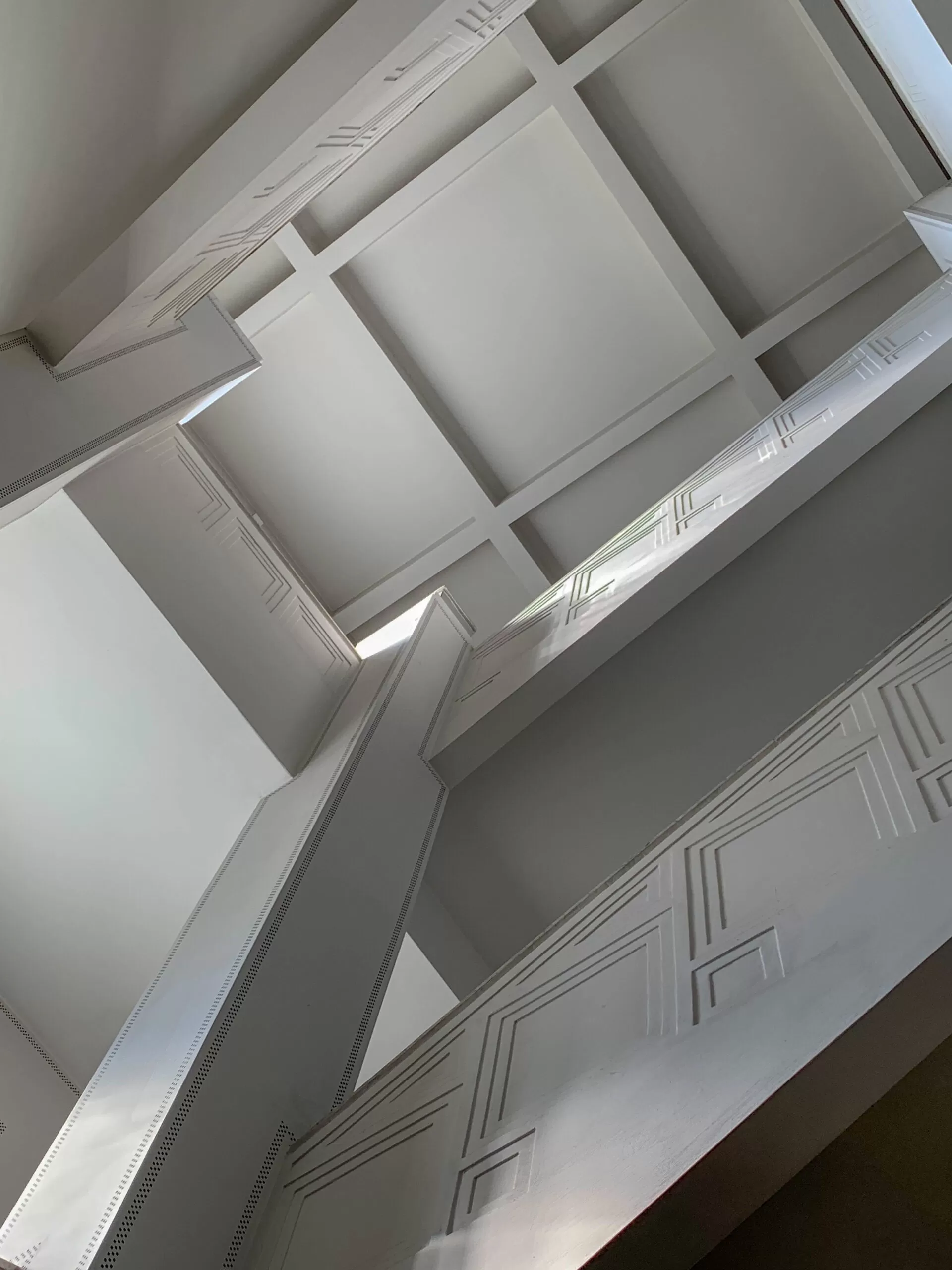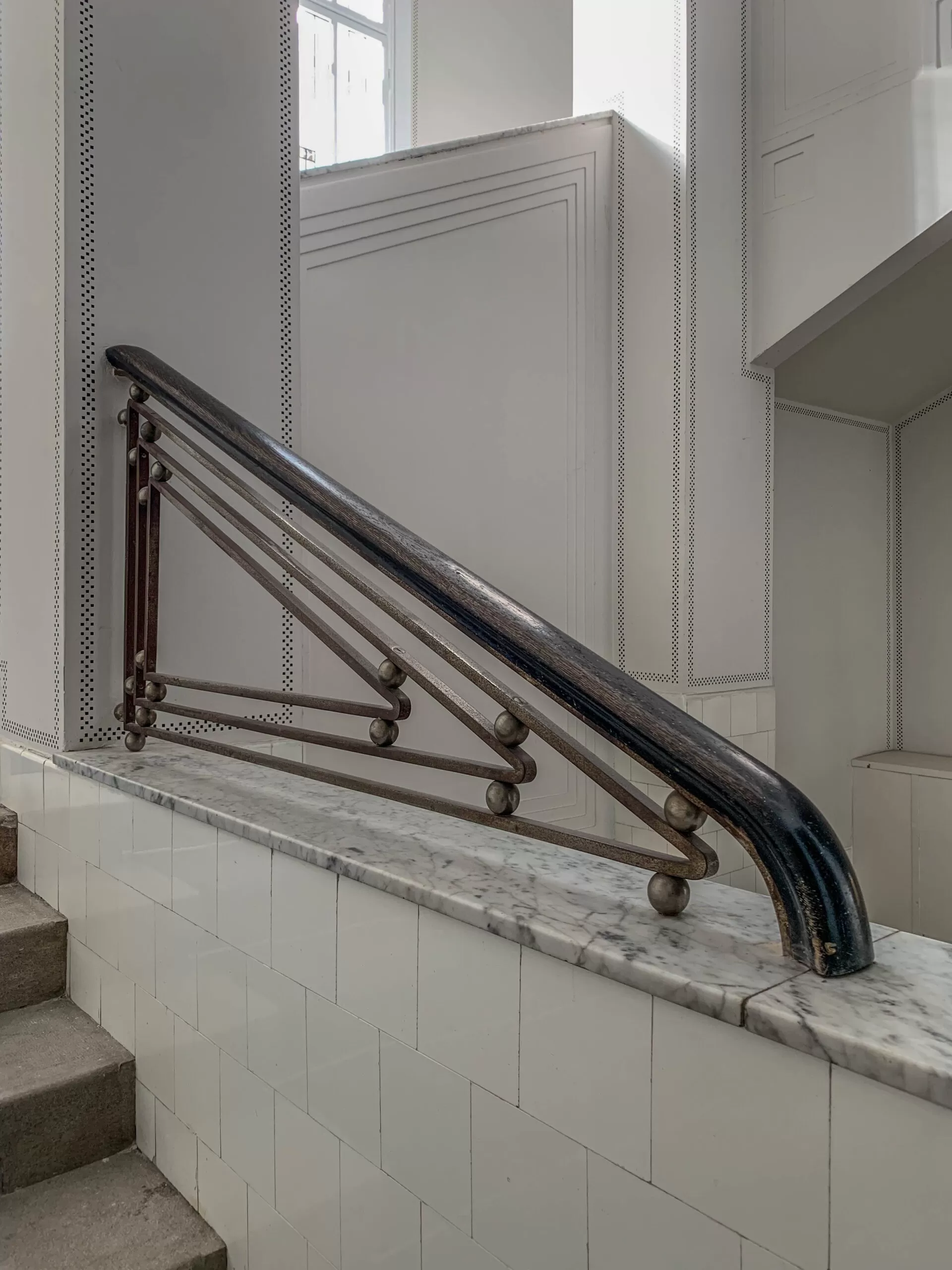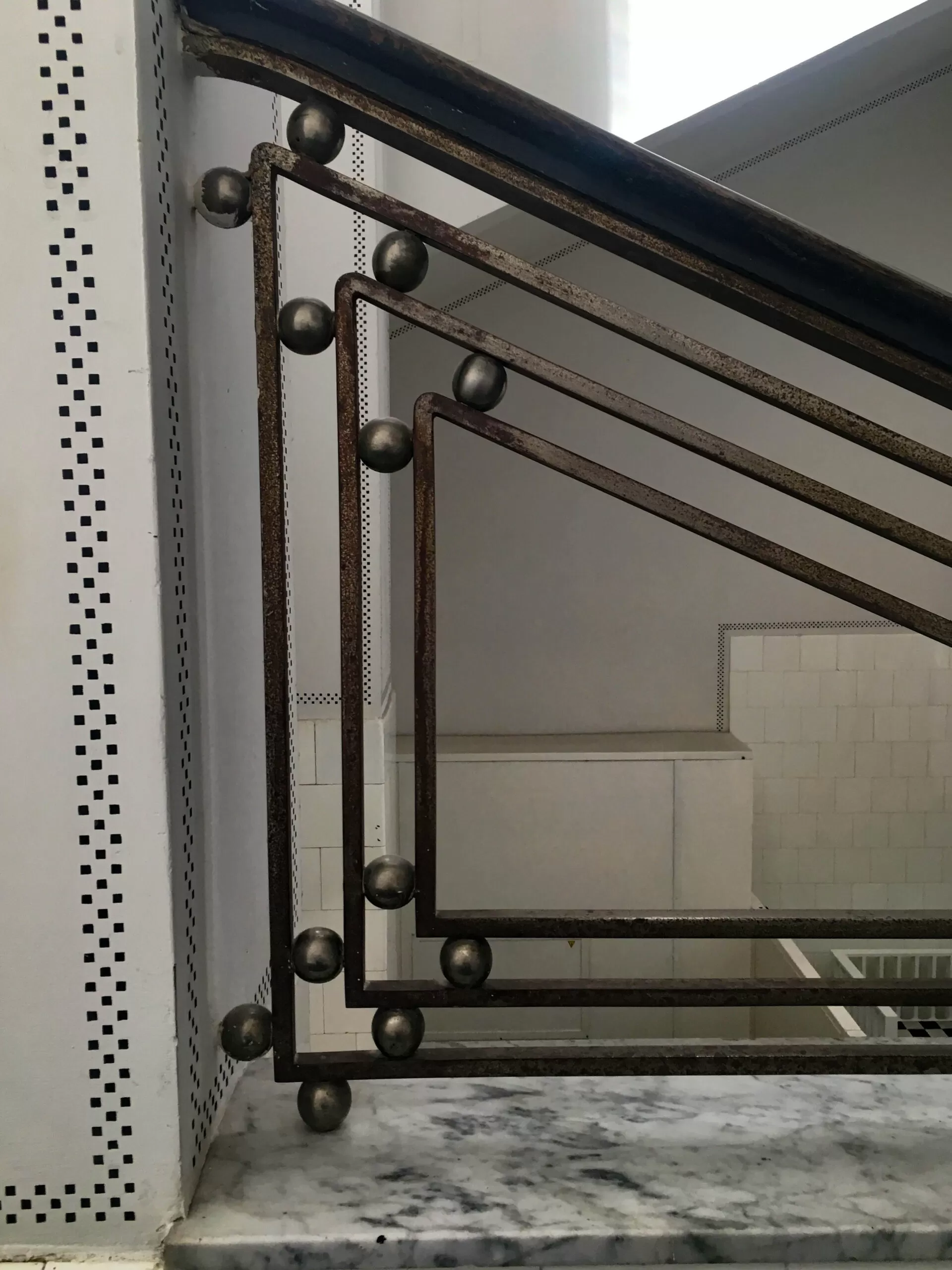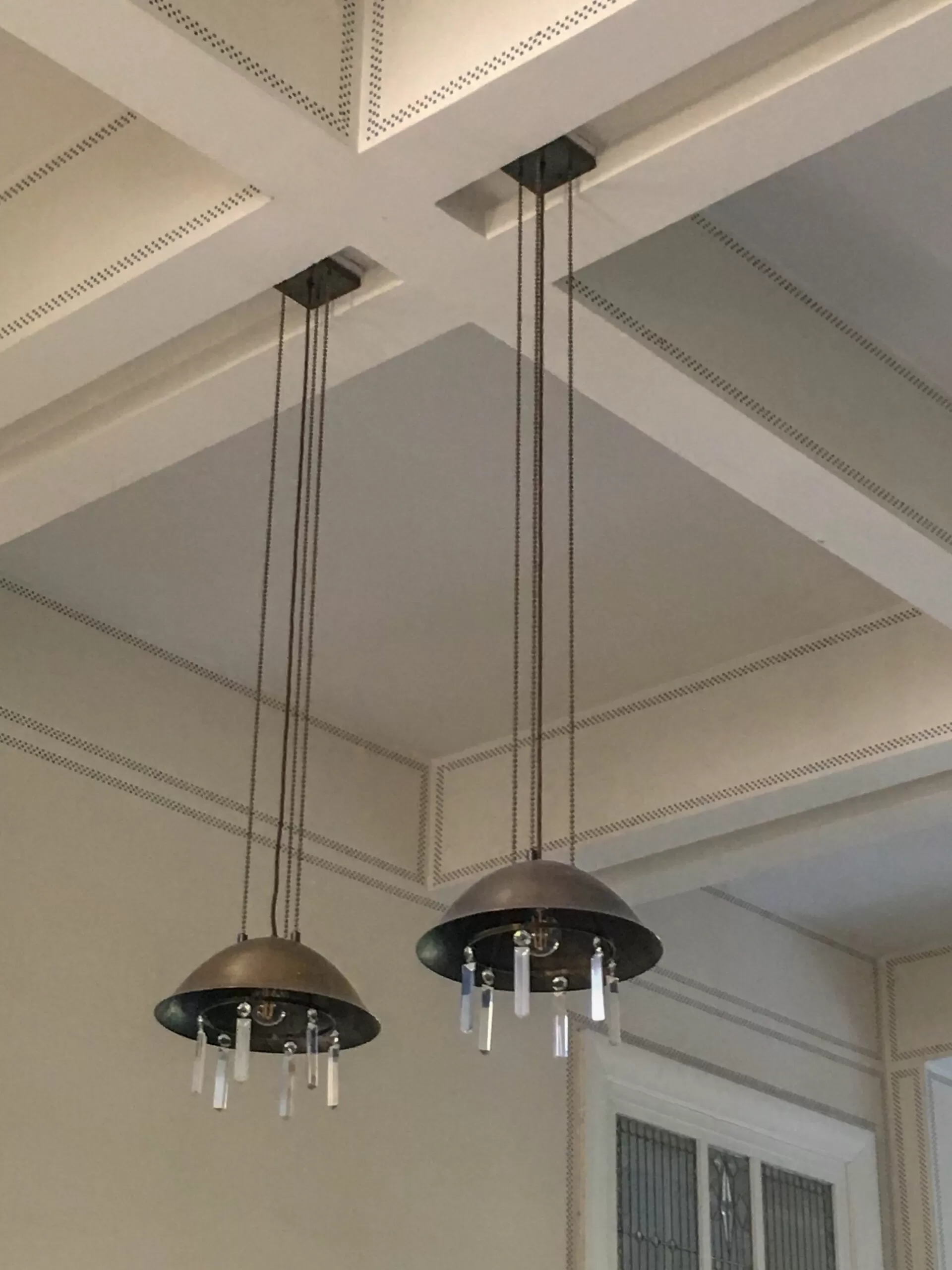1904 – 1905
Architect: Josef Hoffmann
Wiener Strasse 60-70, Purkersdorf, Vienna, Austria
Sanatorium
The Purkersdorf Westend Sanatorium was built between 1904 and 1905 by Josef Hoffmann for the general director of the Silesian Ironworks in Gliwice, Victor Zuckerkandl.
It is considered an outstanding example of architecture in the style of the Viennese Secession.
Background
In 1903, Zuckerkandl had purchased the property on the city limits of Vienna in order to develop it as a health resort for spas and physical therapy.
The sanatorium soon became more of a hotel than a hospital and developed into a social and artistic gathering place for Viennese society.
Among the guests were: Arthur Schnitzler, Egon Friedell, Gustav Mahler, Arnold Schönberg, Hugo von Hofmannsthal and Koloman Moser.
Treatment methods included bathing cures, physical therapies, curative massage and remedial gymnastics. Various reading rooms, game rooms for card games, table tennis, billiards and music rooms provided entertainment for the guests.
In 1926, due to the increased need for space, an addition was made by architect Leopold Bauer against Josef Hoffmann’s wishes, which significantly affected the original design.
Building
Hoffmann‘s design is oriented to the needs of a modern sanatorium. All ornamentation and decoration is largely avoided.
Only the edges of the three-story building, which appears cubic due to the flat roof and the symmetrical projections and recesses of the long sides, are graphically contoured with borders of blue and white ceramic tiles.
The walls are smooth and plastered in white, and the windows are designed without surrounds or cornices.
Inside, Hoffmann left the construction of the reinforced concrete building partially visible.
Interior
As artistic director of the Wiener Werkstätte, Hoffmann involved the latter in the design of the interiors. The furniture designed for the rooms of the sanatorium complemented the architecture in the sense of a total work of art.
After the death of Victor Zuckerkandl in 1927, the sanatorium was taken over by his nephews and nieces. From 1930, a son-in-law continued to run the business with little success.
Towards the end of the Second World War, the building was used as a military hospital. In 1945 it was requisitioned by the Red Army.
Renovation
The exterior of the building was renovated in 1995, when the top floor was removed and the original appearance was restored. An interior renovation took place in 2003.
The sanatorium has had numerous additions over the years. Today it is used as a senior care residence.
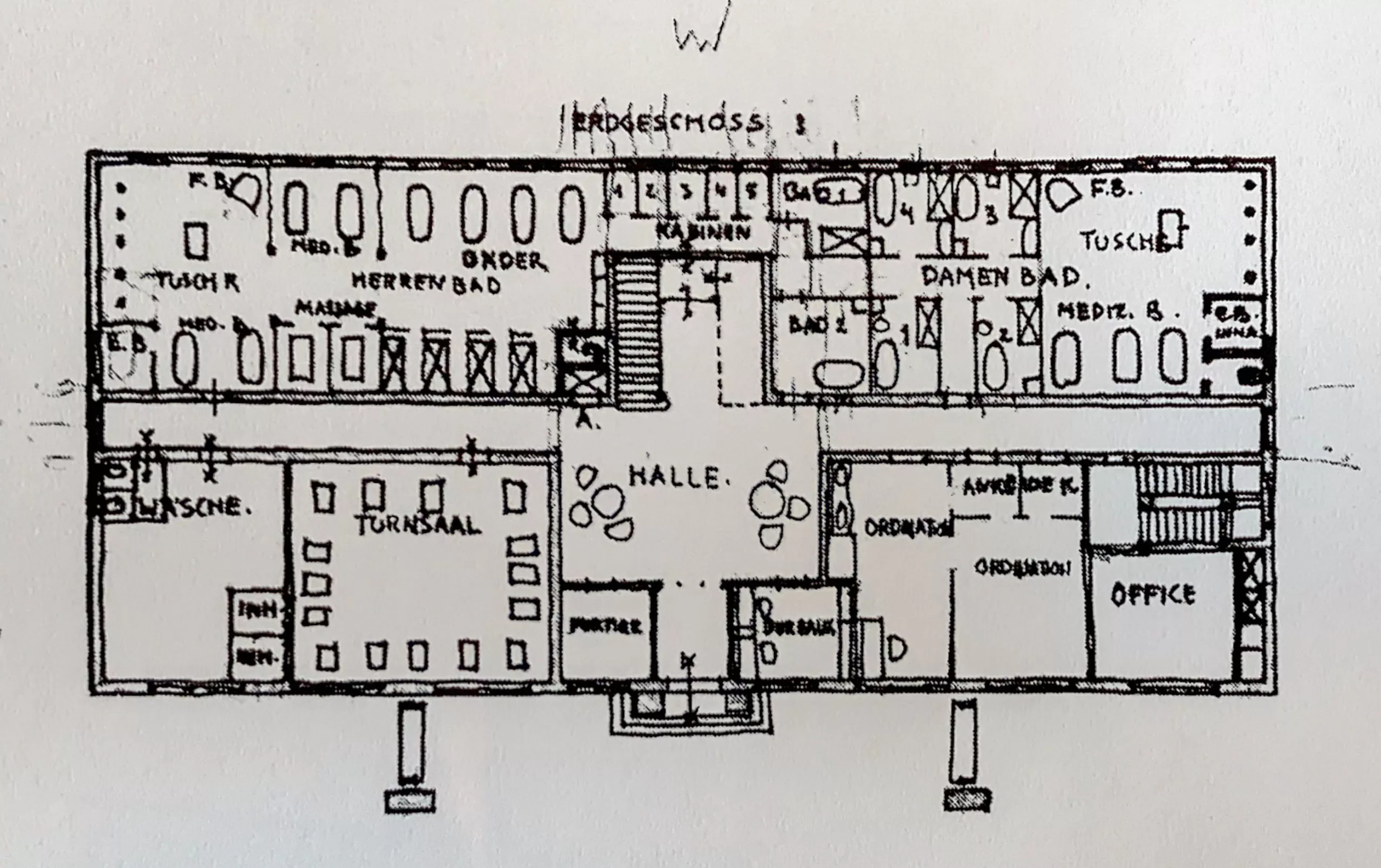
Sanatorium Westend, ground floor plan, 1904-1905. Architect: Josef Hoffmann

